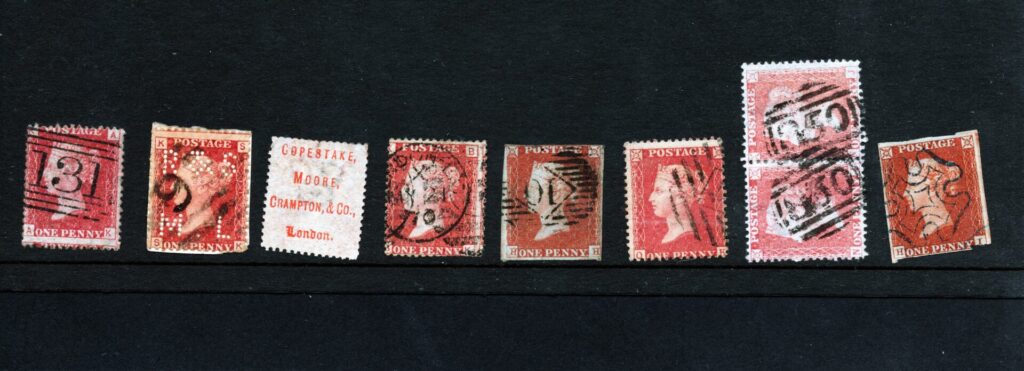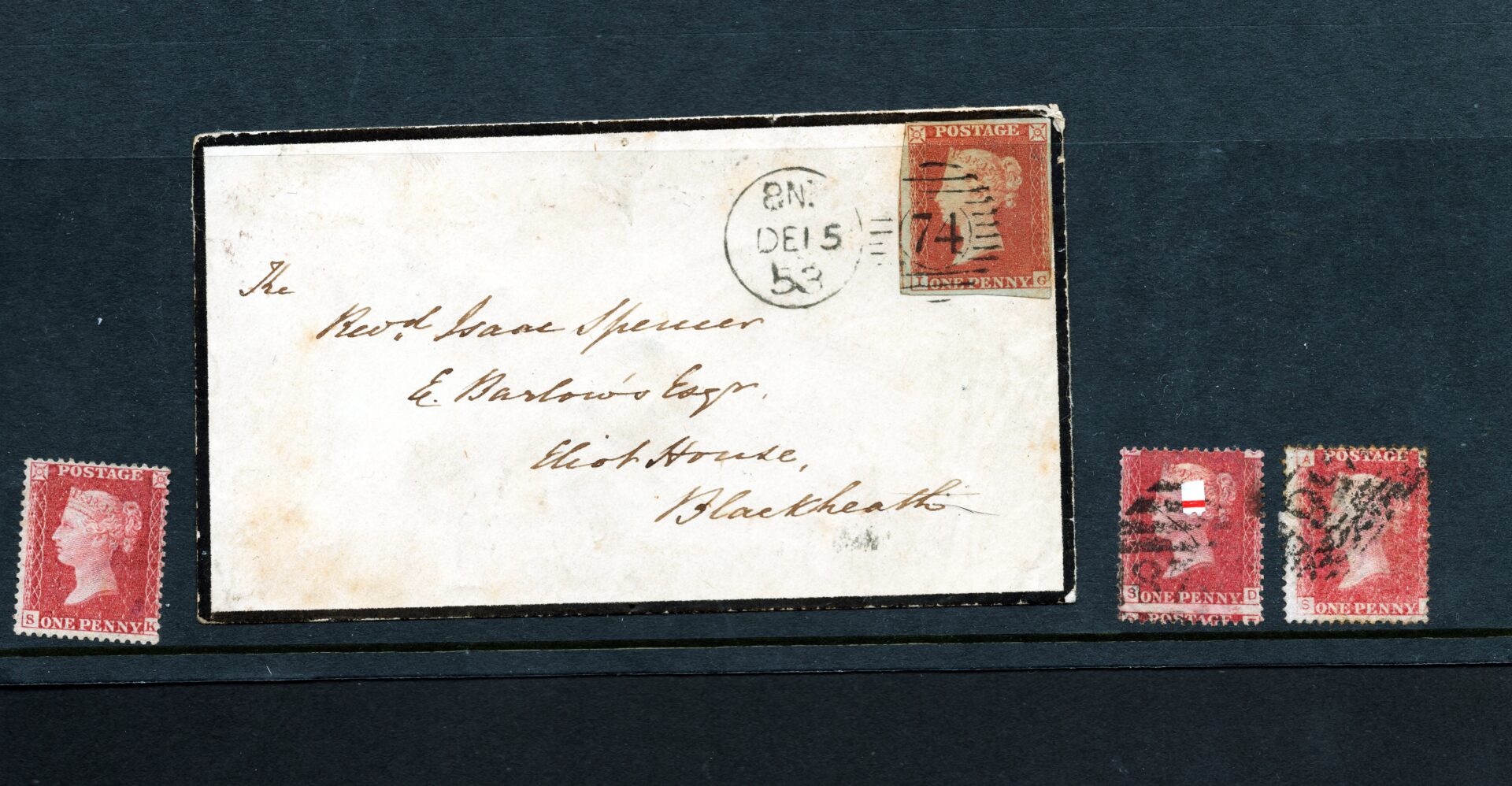Stamp collecting is a journey through history, and one of the most intriguing stamps for collectors is the 1D Penny Red. Following the iconic 1D Penny Black, the 1D Penny Red offers a rich tapestry of history, design, and functionality that makes super interesting for those collecting Victorian era stamps. Learn more about the fascinating details of the 1D Penny Reds, from their origins to their variations and unique features.
This blog was made possible because of the kindness and support from Stephen Jones at Liverpool Stamps. Please take a moment to visit the site and take a look at all the wonderful Penny Reds (and more) available in the shop.
Early Penny Reds: A Transition from the Penny Black
The 1D Penny Red was the third stamp issued by the British postal service. The sequence began with the 1D Penny Black, followed by the imperforated 2D Blue, and then the imperforated 1D Penny Red. The transition from the Penny Black to the Penny Red was primarily due to challenges with cancellation visibility. The red cancellation marks on the Penny Black were often difficult to see, leading to potential reuse of stamps. To combat this, the Penny Red was introduced on February 10, 1841, with a color that provided better contrast with the black cancellation marks, thereby reducing fraud.
The Evolution of Perforations
Initially, stamps were imperforate, requiring postal clerks to cut them manually from sheets, often resulting in uneven or missing margins. The introduction of perforations in the 1850s allowed for easier and more uniform separation of stamps. This advancement not only improved efficiency but also enhanced the aesthetic quality of the stamps, making well-preserved examples with intact perforations highly desirable among collectors.
Types of 1D Penny Reds
There are three main types of 1D Penny Reds:
- Imperforate Penny Red Star: These stamps feature two stars in the top corners and lack perforations.
- Perforated Penny Red Star: Similar to the imperforate version but with perforations along the edges, making it easier to separate stamps.
- SG43 / SG44 Plated Penny Reds: These have four corner letters and visible plate numbers on the left and right sides of the stamp.
Variations and Unique Features
The 1D Penny Reds are known for their numerous dye variations, two types of watermarks (small and large crown), and various plate numbers. Collectors also seek out errors such as inverted or sideways watermarks, “ivory heads,” and guide lines, which add to the stamp’s rarity and value.
The 1D Penny Reds exhibit numerous variations that intrigue collectors:
- Dye Variations: Differences in ink batches led to subtle color variations, ranging from deep red-brown to pale rose-red.
- Watermarks: Two types exist—the Small Crown and the Large Crown—each providing insights into the stamp’s issuance period.
- Plate Numbers: Stamps were printed from plates numbered 1 through 225, with certain plate numbers being rarer and more valuable.
- Errors: Collectible anomalies include inverted or sideways watermarks, “ivory heads” (where the Queen’s profile appears as a white silhouette on the reverse), and guide lines used during printing.
Underprints, Overprints, and Perfins
Underprints, overprints, and perfins were often applied to stamps sent to large businesses. These features served as security measures to prevent theft and helped track stamp usage. Overprints also indicated tax payments by businesses, making it easier for government officials to verify transactions.
Types of Cancels
The method of cancellation provides valuable information about a stamp’s postal history:
Spoon Cancels: Oval-shaped marks, often containing a number, predominantly used in Ireland but also found throughout the UK.
Circular Date Stamp (CDS): A circular mark displaying the town’s name and date, commonly used for hand-stamping mail.
Numerical Bar Cancels: Featuring horizontal bars with a number in the center, these indicate the specific town or city of origin. For example, ‘131’ denotes Edinburgh, and ‘466’ represents Liverpool.
Duplex Cancel: Combines a CDS and a numerical cancel side by side, allowing simultaneous marking of the stamp and the envelope.
Maltese Cross (MX): An ornate cross-shaped cancel used primarily on early issues, with variations that can sometimes identify the mailing location.

If you’d like to learn more about Penny Red stamps, here are some fantastic resources that I’m thrilled to recommend:
The Penny Reds Stamp Guide – Warwick & Warwick
The Penny Red – Stanley Gibbons
Introducing the Penny Red – Smithsonian National Postal Museum
If you are looking for help and information when starting your own stamp collection, some of my guides might be useful to you, including:
Machin Stamps
Glossary of Philatelic Terms
What are Cinderella Stamps?

33 year old casual stamp collector from the UK!
